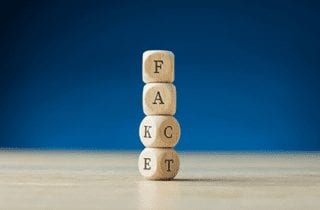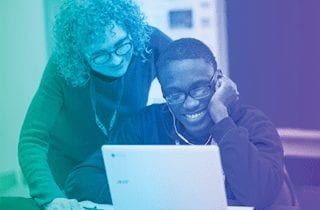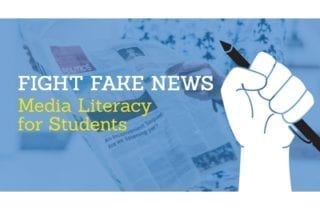Between the recent presidential election, COVID-19, and racial unrest, our students are barraged with 24/7 access to news and media that can be real, fake, or altered. According to the presenters in a recent edWebinar, sponsored by ABC-CLIO, the relationship between the terms “news” and “media” are fundamental distinctions that we need to make when working with students in the new era of journalism. Jacquelyn Whiting, Innovation and Technology Specialist for Cooperative Educational Services, and Peter Adams, Senior Vice President of Education for the News Literacy Project, assert that while there are many credentialed journalists, there is also “a world of citizen journalists with mini computers in their pockets.”
Presented by Michelle Luhtala, Library Department Chair, New Canaan High School (CT); and Jacquelyn Whiting, Innovation and Technology Specialist, Cooperative Educational Services
Today’s students are inundated with information from myriad media sources—social media, blogs, podcasts, text messages, television, internet searches, radio, email, and other communication apps. The list seems almost endless, and it most certainly is overwhelming.
Presented by Jacquelyn Whiting, Innovation and Technology Specialist, Cooperative Educational Services; and Peter Adams, Senior Vice President of Education, News Literacy Project
Presented by Peter Adams, Senior Vice President, Education, News Literacy Project; and Cindy Otis, Former CIA Officer, Author, Disinfo, Vice President of Analysis Alethea Group
In this edWebinar, learn a practical approach to helping students avoid one of the major pitfalls of today’s digital media: falling for fake information.
Twenty years ago it was easier to identify fake news. There were the tabloid papers in the grocery store checkout line and the sensationalized “news” programs that promised inside looks at celebrity lives. Now, between the number of online information sites and the proliferation of social media apps, plus near constant mobile phone use, determining a story’s credibility seems to call for advanced detective skills. In her edWebinar “Fight Fake News: Media Literacy for Students,” Tiffany Whitehead, School Librarian for the Episcopal School of Baton Rouge, says that’s exactly what we need to teach students. While today’s youth may be aware that not everything on the Internet is true, they don’t have the tools to evaluate accuracy and authenticity.
In this edWebinar, gain practical strategies and skills for navigating the landscape of fake news and helping students think critically.
This edWebinar gives an overview of the phenomenon of fake news going viral and tools educators can use to help students develop news literacy skills.
In this edWebinar, Peter Adams, Senior Vice President of Education at the News Literacy Project, provides an overview of the field of news literacy, including the most current trends and research, and offers concrete tools and strategies for addressing these skills in the classroom.








